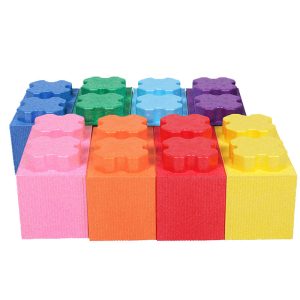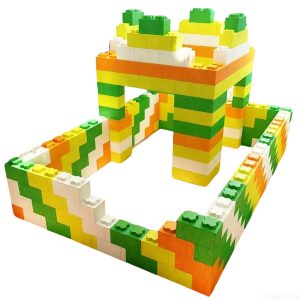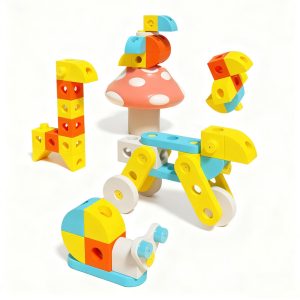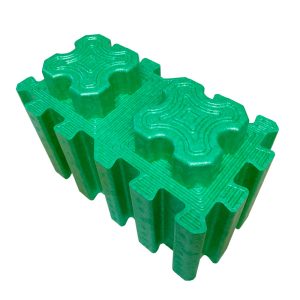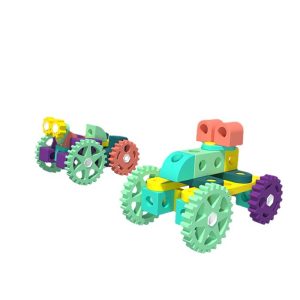EVA vs. EPP Building Blocks: A Comparison of Material, Durability, and Application Scenarios
Although both EVA and EPP belong to the category of “foam building blocks”, they differ significantly in terms of target users and user experience. The following is a concise comparison from core dimensions to help parents make accurate choices.
I. Material: Core Differences in Safety and Texture
- EVA Building Blocks: Essentially soft foam, similar to the material of anti-slip mats.They have slow rebound when pressed.
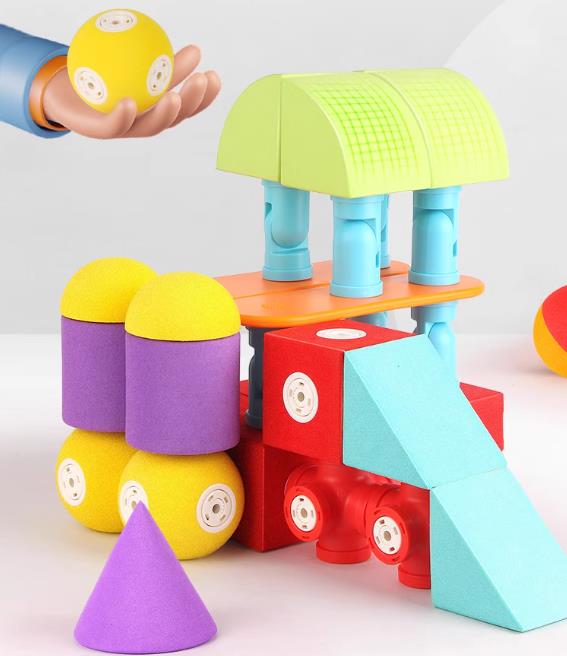
- EPP Building Blocks: High-elastic polypropylene foam made from food-grade raw materials, with no odor and a dense structure. They are bouncy to the touch and rebound quickly when pressed, and are commonly used in the buffer layers of children’s safety seats. However, small particles may be bitten off from this material, so it is more suitable for making large-sized toys.

II. Application Scenarios: Choose Based on Age
1. EVA Building Blocks: Suitable for Babies Aged 1-6
- Core Uses: Enlightening fine motor skills (large size for easy grasping) and facilitating simple cognition (printed with patterns of animals/numbers).
- Tip to Avoid Mistakes: Do not buy small blocks with a side length of less than 3cm.
2. EPP Building Blocks: A Creative Choice for Children Aged 1+
- Core Uses: Building complex structures such as large castles/tunnels (children can crawl inside to play), serving as props for role-playing (supporting climbing and leaning), and being used in kindergartens (lightweight and waterproof).
III. Key Tips for Purchasing to Avoid Mistakes
- Do not pursue low prices: For EVA building blocks, check quality certifications and avoid ultra-low-priced products, as products with excessively low prices are likely made of recycled or mixed materials; for EPP products, check the surface density – those with too low density are prone to breaking.
Summary
EVA building blocks are a “safe transitional option” for younger babies, while EPP building blocks are an “advanced creative option” for older children. By choosing based on the child’s age and specific needs, parents can avoid making wrong purchases.

